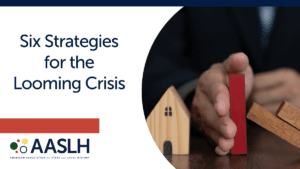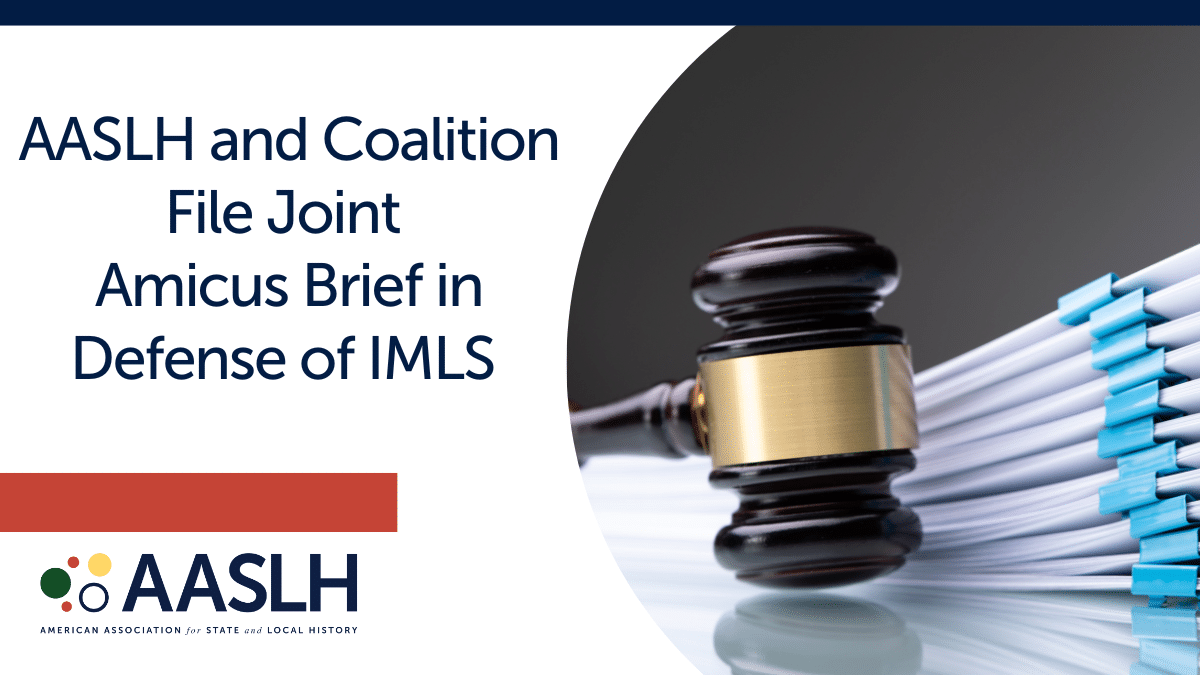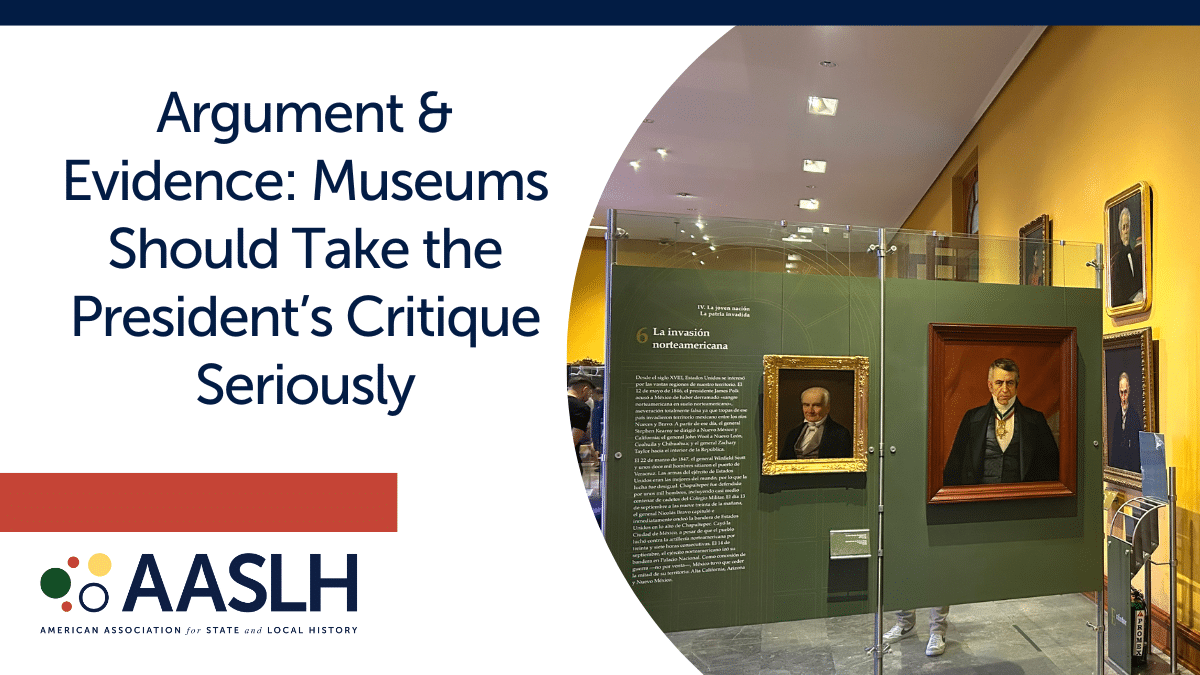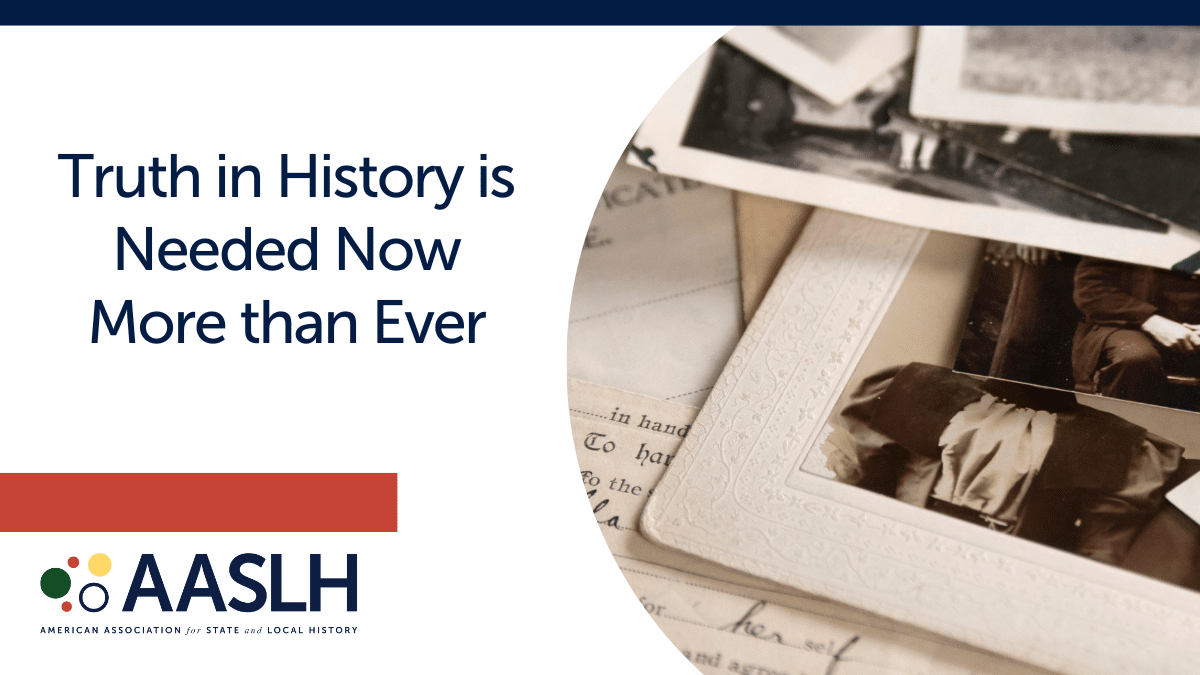
By Bruce W. Dearstyne
John Dichtl’s recent open letter to AASH members reminds us that we may be headed into a crisis
President Donald Trump has issued an Executive Order banning “radical anti-American ideologies” in the schools and establishing the “President’s Advisory 1776 Commission” to promote patriotic education and advise on the upcoming 250th anniversary of the Revolution. His DOGE commission is reducing the size of government and targeting grant programs. It isn’t clear what impact this will have on the National Archives, Smithsonian history programs, Library of Congress, and critical funding agencies such as the National Historical Publications and Records Commission and the Institute of Museum and Library Services.
Many of our history programs are dependent, directly or indirectly, on federal support. AASLH and other historical organizations will be monitoring developments in Washington closely and can be expected to mount a counter-effort. But this is all something of an alarm bell for our field. There are things we can do right now to strengthen our programs and cushion against whatever is coming. A few possibilities:
- Revisit mission. It is important to have a clear, concise mission statement on what our programs do, what their ultimate goals are, and how they impact (or change) people’s lives. As the tenor of the times shifts, as may be happening now, it is useful to revisit mission. Of course, it is essential to stay with a commitment to full, accurate history. But it is an opportune time to scrutinize our mission statements and make sure that they effectively communicate our purposes.
- Revisit strategic plan. Many of our programs were reminded of the importance of a well-considered strategic plan during the last recession and COVID, when we rather suddenly had to curtail our work. There has been an uptick in thoughtful strategic plan revising since then. The best of our strategic plans, particularly recent ones, set clear priorities and define clear strategies. That will be very helpful if we have to cut back in determining what is essential to keep, and what can be downsized or even eliminated.
- Increase initiatives to explain what we do and why it is important. Most members of the public, when asked, say they value museums and other history programs. But they don’t really understand what we do or why it is so important. This suggests more efforts toward explaining how we create exhibits and other public programs from the sources and why historians change their minds – and their interpretations – over time. The AASLH Reframing History initiative provides lots of guidance on how to have a more productive conversation about history. This is a critical time for that conversation.
- Increase fundraising. Gaining financial support for our programs is, of course, an ongoing challenge. But as federal resources diminish (if in fact they do), we can make a new (and perhaps more urgent) appeal for funding from foundations and individuals to increase their support so we can keep critical programs going (which, in turn, accents the critical need for the approaches in points two and three, above).
- Redouble efforts at the state government level. Many state governments are themselves dependent on federal funds to support critical services. That means their budgets will be stretched if the federal government cuts back on Medicaid and other service programs. But many of our programs are also dependent, or partially dependent, on state funds and support. This suggests redoubling advocacy efforts right now at state capitals, where annual budgets are being hammered out. I can say from long years of experience that making the case to legislators who are interested in history and cultural programs is not all that hard to do, and often they can protect (or add) modest funding for history-related items in state budgets.
- Draw on and learn from our own history. We in the history community too often don’t draw on our own history. We have seen challenges and crises before. There are strategies that the community deployed to minimize and sometimes surmount the crisis. Often, this has meant leadership by professional organizations; appealing to the public via the media; highlighting and even dramatizing the significance of particular aspects of our programs; and, also, changing with the times and letting people know why and how we are changing. One example, not well known, is the battle to keep political influences from dictating the content of history books in the public schools a century ago. The campaign worked because the history community pulled together and made convincing arguments.
A final, less well-defined strategy might be: stay upbeat! We have been through critical times before. The nation needs to reflect and draw on its history now as much as any time in our past. That reaffirms the essential need for our programs.
Bruce W. Dearstyne is a historian in Albany, New York. He has written two books and two technical leaflets for AASLH and several articles for History News. He has also written for New York History, History News Network, TIME Magazine’s Made by History, the American Historical Association’s Perspectives in History, and other publications. His most recent book is Progressive New York: Change and Reform in the Empire State, 1900-1920–A Reader, published last year.



